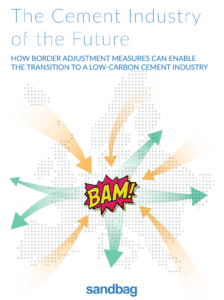 31 January 2017
31 January 2017
As the EU debates whether to raise border tariffs on cement, new research shows that a border adjustment mechanism would offer better incentives to cut cement emissions than the current EU ETS free allocation, whilst rewarding companies that produce low-carbon cement.
In mid-February, the full European Parliament will vote on whether to adopt a new border adjustment mechanism (BAM) proposed by the Parliament’s Environment Committee. A BAM would essentially require importers of cement and clinker into the EU to surrender emissions permits corresponding to the embedded carbon in their products – just as domestic EU cement manufacturers are required to do at present. At the same time, cement (along with other sectors that have low trade intensity and are also covered by the BAM), would no longer receive free allocation with BAM acting to prevent carbon leakage.
Read the full report: The Cement Industry of the Future
